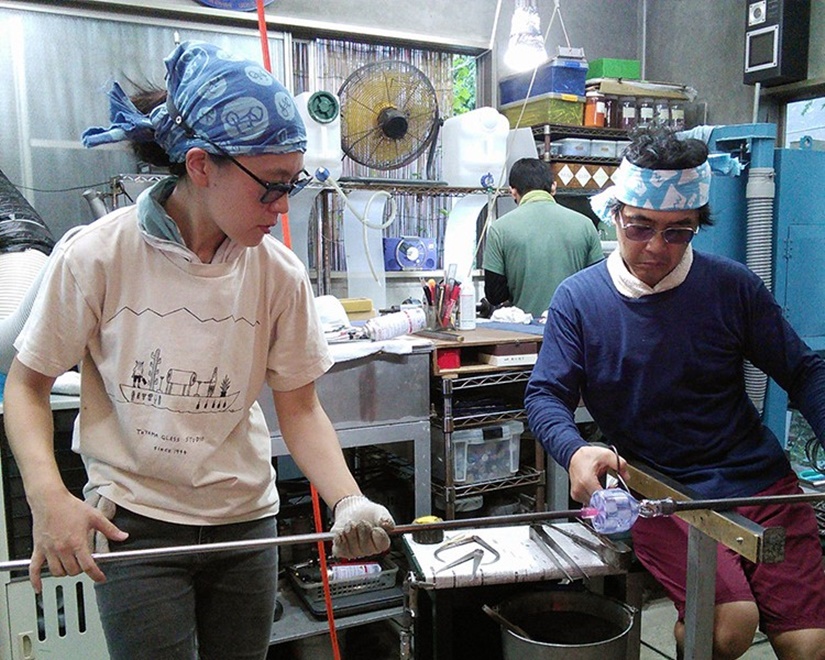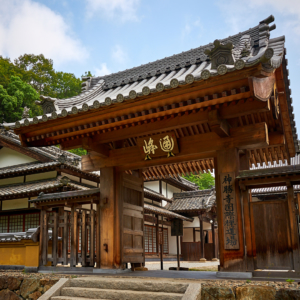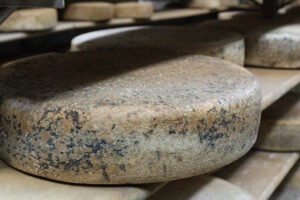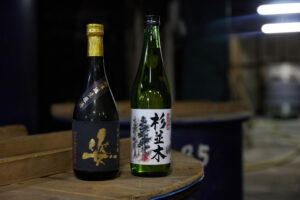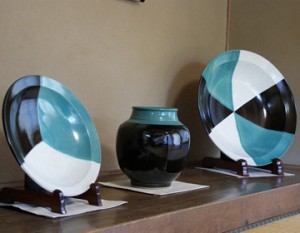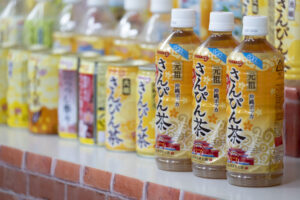This glass studio was established in 1998 by two glass artisans, Ushio Konishi and Fujiko Enami, after training at
Chadam Glass Company in Massachusetts, USA.
The works are characterized by the strong individuality of each artist.
What is Venetian glass, a vivid and attractive glass?
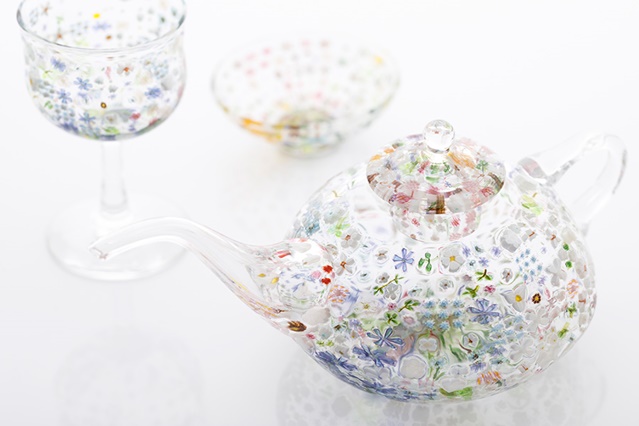
When we visited the glass studio SILICA in the Ibaraki section of this trip, Ms. Fujiko Enami had just been invited as a guest artist. I heard that she and glass artist Ushio Konishi were working together at Ushio Studio in Kanagawa, so I paid a visit.
The Venetian glass that Ushio Studio makes is a craft that originated in Italy and is characterized by the fact that it is made by hand by craftsmen.
Mr. Enami specializes in a technique called ” murrine, ” which is a traditional technique of Venetian glass. First, a glass rod is made by trapping various colors and patterns in a single piece of glass. The glass rod is then cut into small pieces like Kintaro candy, which is the material used to make murrini. The glass pieces are then joined together like a mosaic, heated in a kiln, and blown into shape.
Many of Mr. Enami’s works are fashionable glasses with designs of flowers, hearts, bees flying over a hive, and other designs that would fit in well in today’s life. The colors and motifs are lovely, and the works are full of a unique world view.
I want to use the Venetian technique to create glassware that fits the Japanese lifestyle and touches the heartstrings,” he said.
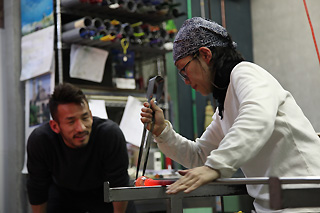
Lace Glass” made with a more delicate technique
After graduating from university, Ushio Konishi trained at glass companies in Japan and abroad before returning to Japan from the United States. After returning to Japan from the U.S., he established the Ushio Studio with Mr. Enami.
He tells us that he is envious of the fact that the ocean is so close by here on the Miura Peninsula, and that he sometimes goes diving in the ocean after work.
Some of Konishi’s works are called “lace glass,” in which fine lines are folded over and over in layers to form beautiful patterns in the glass. As the name suggests, the delicate and intricate lines are drawn as if they are woven into lace. Like Mulline, the process of making lace glass begins with the creation of glass rods, which are used as the raw material. By combining multiple glass rods, a new lace pattern is created, allowing for the rich and colorful expression of Konishi’s work.
Our style of production is teamwork,” says Enami. Many of the tasks at Ushio Kobo cannot be done by one person. Observing the work, it is clear that the members of the studio must work together and breathe in unison to complete the work. However, even in the midst of collaborative work, each person has his or her own unique style. Thus, while helping each other, they create their works in such a way as to make the most of their individuality.

Nakata, too, had a hard time making it,
Nakada also had a hard time making a glass cup, so he decided to make a glass cup out of lace glass. First, we made glass rods as materials. The glass rods were melted by combining glass rods of seven different colors, and two people held the rods with lumps of glass on them and stretched them at both ends.
Mr. Konishi has Nakata hold one of the rods, and he himself holds the rod. The work begins with the words, “Well, let’s go,” but speed is especially important at this point. Nakata was impressed by the way the glass was stretching, but his face gradually became stern. As the glass grew, it became heavier and heavier. Yes, it’s okay. You can put it down. Nakata’s arms were so tight when he was told to put it down.
The glass rod was worth the effort, and the seven-colored lines were firmly spiraling on the glass rod.

The glass rod is then cut to the size of the cup and combined. The glass rods are then melted and blown to create the shape of the cup. After repeated minor modifications, a cup with beautiful rainbow-colored lace was completed.
The finished product is delicate and beautiful, but it takes a lot of strength to make. Nakata was sweating as he spoke, “It’ s so hot… Nakada was able to experience the difficulty and fun of glass making, something that can only be done at Ushio Kobo.
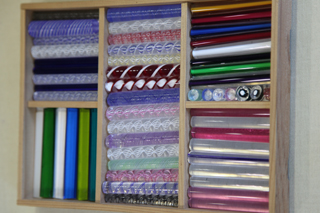
There are high expectations for Ushio Kobo, which will continue to hone its capabilities as a team to create unique glass pieces that will be used by many people in Japan.

While using the technique of Venetian glass, I make glass works that can be used in Japanese life. The delicate lines and beautiful patterns seen in the glass are unique and one-of-a-kind. Please enjoy them as a colorful addition to your daily life.



